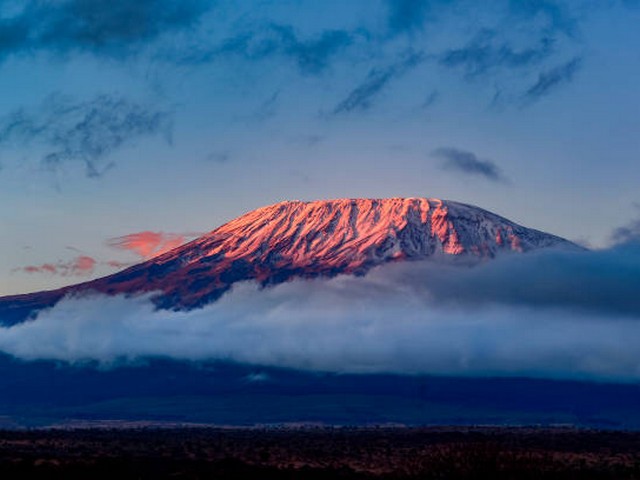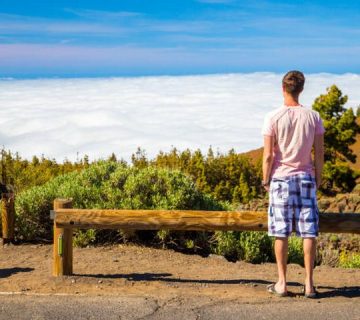Experience the Heart of Africa: Kilimanjaro Trekking with Community Engagement
Discovering the Roof of Africa and Its Cultural Tapestry
Mount Kilimanjaro, the towering giant that kisses the clouds above Tanzania, isn’t just a mountain—it’s a vibrant ecosystem, a cultural treasure, and a beacon for adventurers from all corners of the globe. At Kilimanjaro Centre for Trekking and Ecotourism (KCTE), we believe that the journey to Uhuru Peak becomes even more enriching when combined with authentic community engagement. Imagine not only reaching the summit but also immersing yourself in the lives and traditions of the local communities. In this blog post, we’ll explore how you can transform your climb into a profoundly impactful experience, where every step supports and celebrates the local culture.
Why Combine Trekking with Community Engagement?
Mount Kilimanjaro is surrounded by a rich cultural landscape inhabited by the Chagga people and other indigenous groups. These communities are the soul of the region, offering insights into a way of life that balances traditional practices with the challenges of modernity. By engaging with these communities, trekkers can gain a deeper appreciation of the mountain and the people who call it home. This approach not only enriches your experience but also fosters responsible tourism that benefits local economies and ecosystems.
The Unique Approach of KCTE
At KCTE, we specialize in curating experiences that honor both the natural beauty of Kilimanjaro and the cultural heritage of its surrounding communities. Here’s how we do it:
Cultural Immersion Tours
Before or after your trek, join us on a cultural immersion tour. Visit local homes, try your hand at traditional cooking techniques, and even participate in dance and music sessions. These tours help preserve cultural heritage and create meaningful interactions between visitors and locals.
Community-Driven Conservation Efforts
KCTE collaborates with local conservation groups to protect the environment that makes Kilimanjaro so special. By choosing us, you contribute to reforestation efforts, wildlife protection initiatives, and environmental education programs—all pivotal in maintaining the health of the Kilimanjaro region.
Supporting Local Economies
We ensure that a significant portion of your trek fees go directly to local guides, porters, and artisans. This economic support helps uplift the communities and provides you with authentic, handmade souvenirs that carry the spirit of Kilimanjaro.
What to Expect During Your Trek
Preparing for the Climb
Kilimanjaro offers various routes, each with its own unique features and challenges. Whether you choose the Machame, Lemosho, or Marangu route, preparation is key. Our expert guides are ready to help you select the best path based on your experience and fitness level.
The Journey Upwards
As you ascend, you’ll pass through lush rainforests, alpine deserts, and arctic summits, each zone offering a different ecological perspective. Our knowledgeable guides will share insights about the flora and fauna, making your ascent an educational experience as well.
The Summit Experience
Reaching Uhuru Peak, the highest point in Africa, is an unforgettable moment. As you stand above the clouds, watching the sunrise over the vast African landscape, you’ll feel a sense of accomplishment that’s magnified by the knowledge that your journey has supported the communities below.
Post-Trek Community Engagement
After descending, there’s more to explore. Engage in a post-trek community visit organized by KCTE. Participate in educational programs, help with community projects, or simply spend time learning about local life. These activities provide a deeper understanding of the region and its cultural dynamics.
Your Next Steps to Adventure
Are you ready to embark on a journey that challenges the body, enriches the mind, and nourishes the soul? Booking your Kilimanjaro trek with KCTE means choosing an adventure that respects and uplifts the local communities. Visit our website to learn more about our packages and how you can be part of a truly transformative experience.
Frequently Asked Questions (FAQ)
What is the best time of year to climb Kilimanjaro?
The best times to climb Kilimanjaro are during the dry seasons: January to mid-March and June to October. These periods provide the most favorable weather conditions for trekking.
How fit do I need to be to climb Kilimanjaro?
Climbing Kilimanjaro is a physically demanding endeavor that requires prior preparation. It is advisable to engage in cardiovascular and strength training exercises several months before your trip.
What should I bring for the community engagement activities?
Lightweight, culturally respectful clothing, gifts like school supplies or sports equipment for children, and an open heart ready to learn and share experiences.
Can I customize my trekking and community engagement package?
Absolutely! KCTE prides itself on creating tailored experiences that meet the needs and interests of our clients. Contact us to discuss how we can personalize your journey.
Conclusion: A Call to Adventure with a Heart
Trekking Kilimanjaro with a focus on community engagement offers more than just a physical challenge—it’s a chance to connect with the heart and soul of Tanzania. Each step you take not only brings you closer to the summit but also deeper into the vibrant cultures that make this region so extraordinary. Book your climb with Kilimanjaro Centre for Trekking and Ecotourism today, and take the first step towards an adventure that echoes beyond the mountains.
Embark on a journey that transforms you and the world around you—climb Kilimanjaro with KCTE, where adventure meets heritage, and every trek tells a story. Join us, and be part of a story that you’ll be proud to share.




